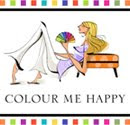pitching is also referred to as spec work
it all boils down to one thing: what is the value of your artistic talent?
recently i was in conversation with someone who needed a logo design and some branding for their company. after having reviewed my portfolio the potential client contacted me with complements, and then explained that they wanted to approach this project by asking designers to present one or two concepts for free so they could evaluate which designer best got the gist of what they were looking for. following that, a conversation about money would take place with a promise for more projects to come.
so what is wrong with this approach?
• well for one, nobody likes to work for free. if ten designers decide to pitch a concept on a project, then the odds are that you are not going to get paid for your work. the higher the number of designers, the lower the odds of you getting hired. simple math.
• secondly, the most important creative aspect of a project being its conceptual process, you are essentially giving your most potent and valuable asset for free. not to mention, if you are really interested in getting the gig, you have to give it your best efforts. otherwise why bother?
• then there’s the legal aspect of intellectual property. should the client pick another designer, there is no way for you to know for sure that they won’t make use of any part of your concept. even if you think you know the client, most likely you don’t know their level of integrity. people having been burned in the past by those they trusted can attest to that.
what should you do if you are faced with such a request?
• first of all, don’t react with offense if you are offended. if you need, take 24-hours before responding so the heat may cool off.
• give the client the benefit of the doubt and explain that the purpose of your portfolio is to help them appraise your talent, your style and your capacity for doing good work.
• then politely decline the request. that is what i did in the situation above, and i was thanked for my well presented response. at the end of the day many people don’t understand the ethics of our industry and there’s no point in burning bridges with them. your reputation lives in many places, and your interaction with clients, potential or not, is one such avenue.
personally, i come from the old school of design. there are many things i have had to adjust to with the changes in time, but pitching design concepts for free is not one of them. i remain adamant to the unethical nature of such requests. there are negative impacts on both you the designer, and the client (but that’s for another post).
here is the most important reason of all why you should decline such requests:
you are undervaluing your work, and undervaluing our industry as a whole. it is hard enough to educate certain people in understanding the importance of our work and its impact in the communication and marketing industry. please don’t make that job any harder by selling yourself short. the impact is far-reaching. any successful designer can attest to that.
as a designer, your talent and its value is something i greatly stand for. i believe we make a huge difference in the success of our clients’ businesses and i stand for us being acknowledged for that and well remunerated for our contribution. i can only hope that you, designer peers, share this commitment.
. . . . . . . . . . . . . . .
if you want to read more about the ethics of pitching, definitions and exceptions:
•
AIGA .(professional organization for design)


















